Teaching Place Value
By Mary Montero
Share This Post:
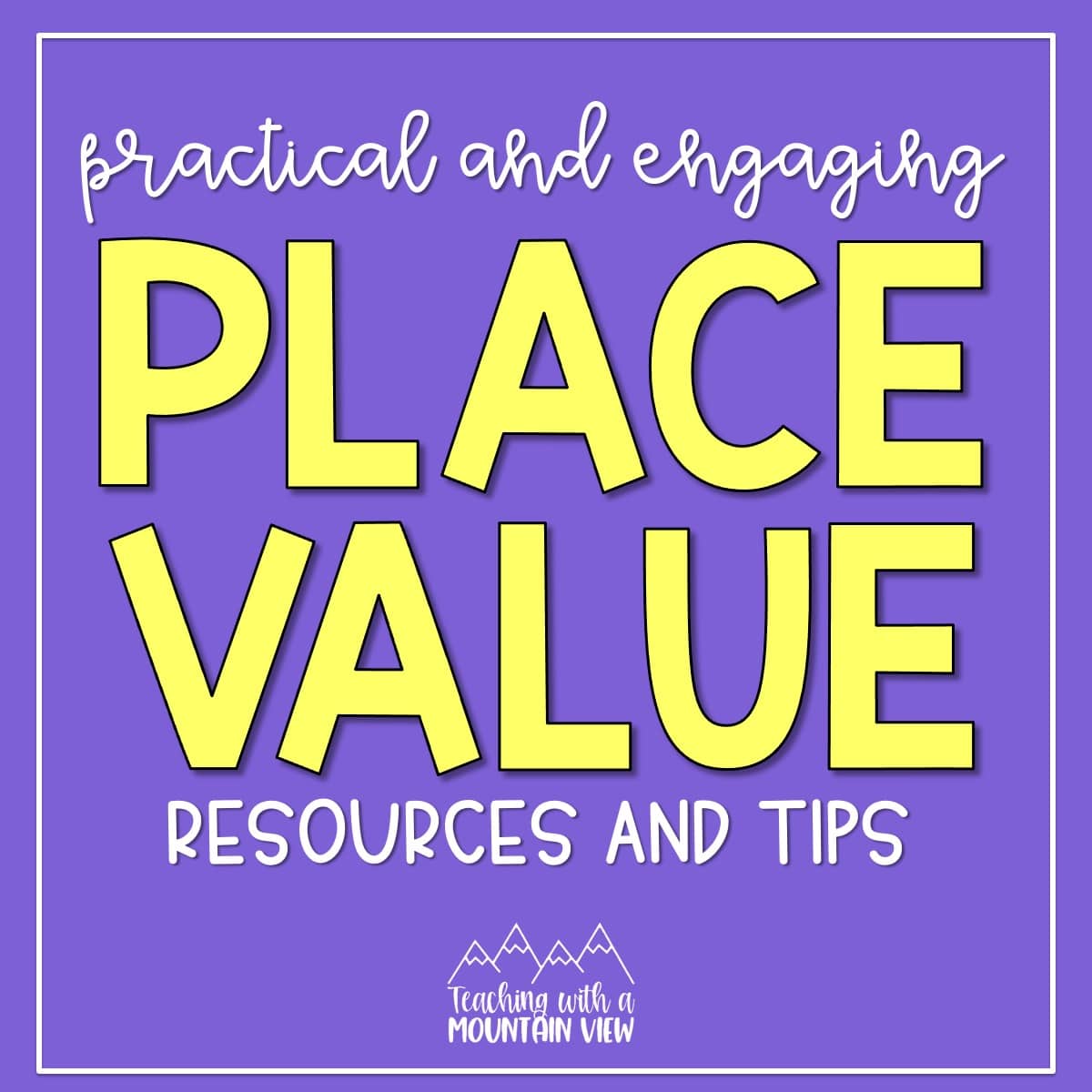
A few weeks ago, I asked my Facebook followers about the very first thing they taught in math at the beginning of the school year. All but one or two people said PLACE VALUE! I looked back at my blog and couldn’t believe it when I realized I had never blogged about a few of the activities I do when teaching place value. I suppose it’s because it has always been at the beginning of the year, and things just tend to get lost in the shuffle in the craziness that is the beginning of the year.

So, without further ado, I’m sharing a few activities we have done over the years. I’m going to let the pictures do most of the talking since I tend to get a little wordy! (Be sure to read to the bottom of the post for great ideas from my Facebook followers, too.)
We started with an anchor chart (shocking, right?!). I prep this chart ahead of time since there are so many straight lines involved.
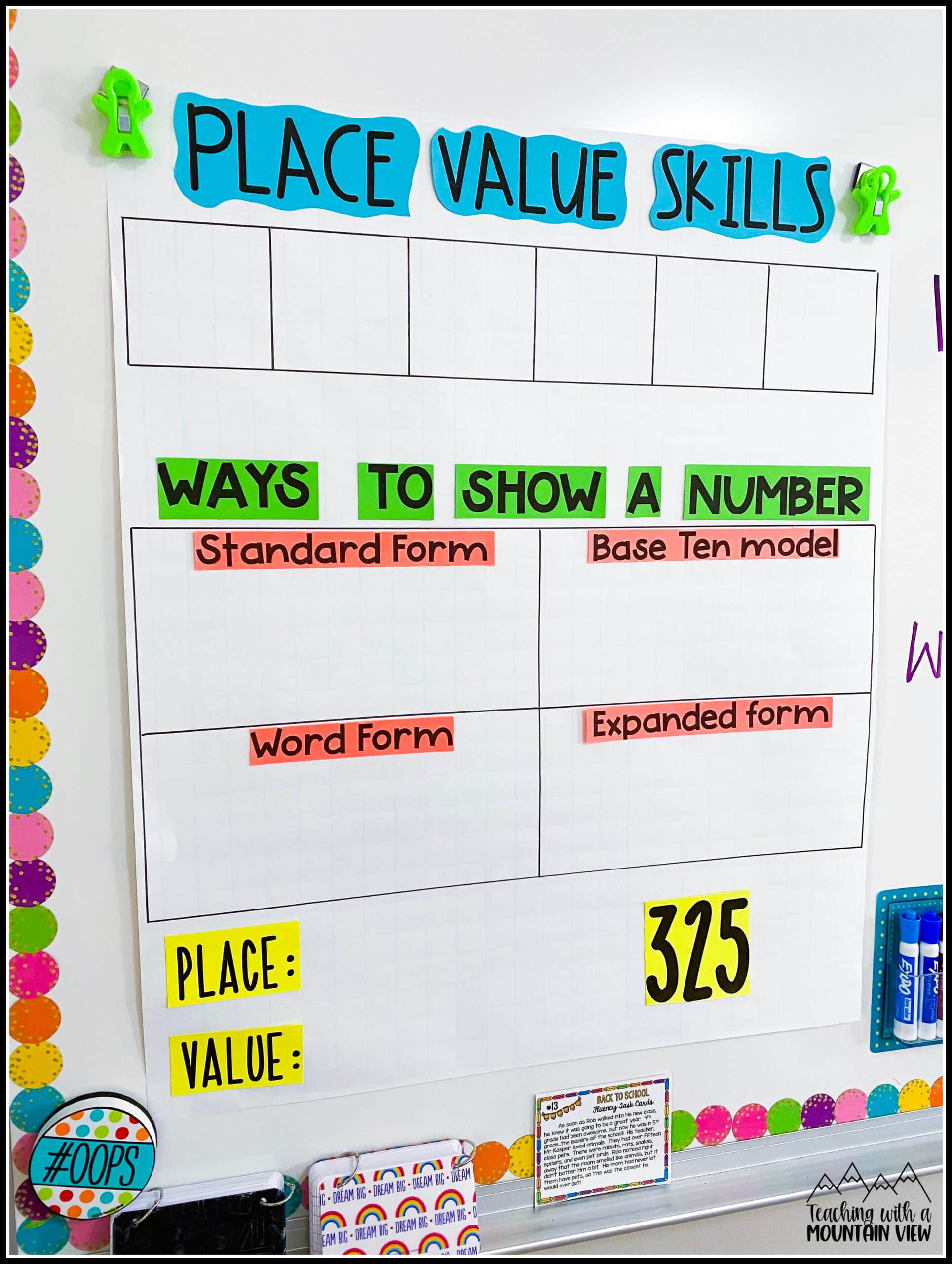
Here is what the place value anchor chart looks like when we are done.
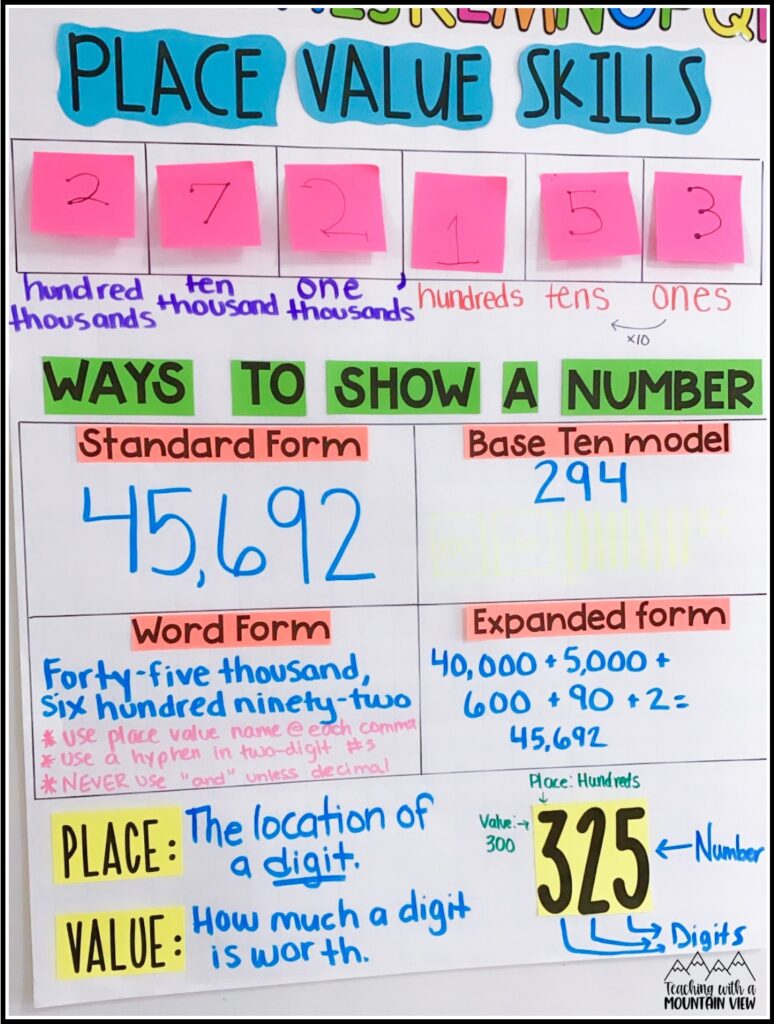
Place Value Notebook Pages
One of the first math notebook entries we do is on Place Value (right after the ten commandments of math). I spruced my notebook template up this year to offer to you for FREE HERE!
You can see that the notebook entry very closely follows my anchor chart that I make with the class. We have really focused in on the difference between PLACE and VALUE. This is crucial with this age level, as they truly have to understand the difference.
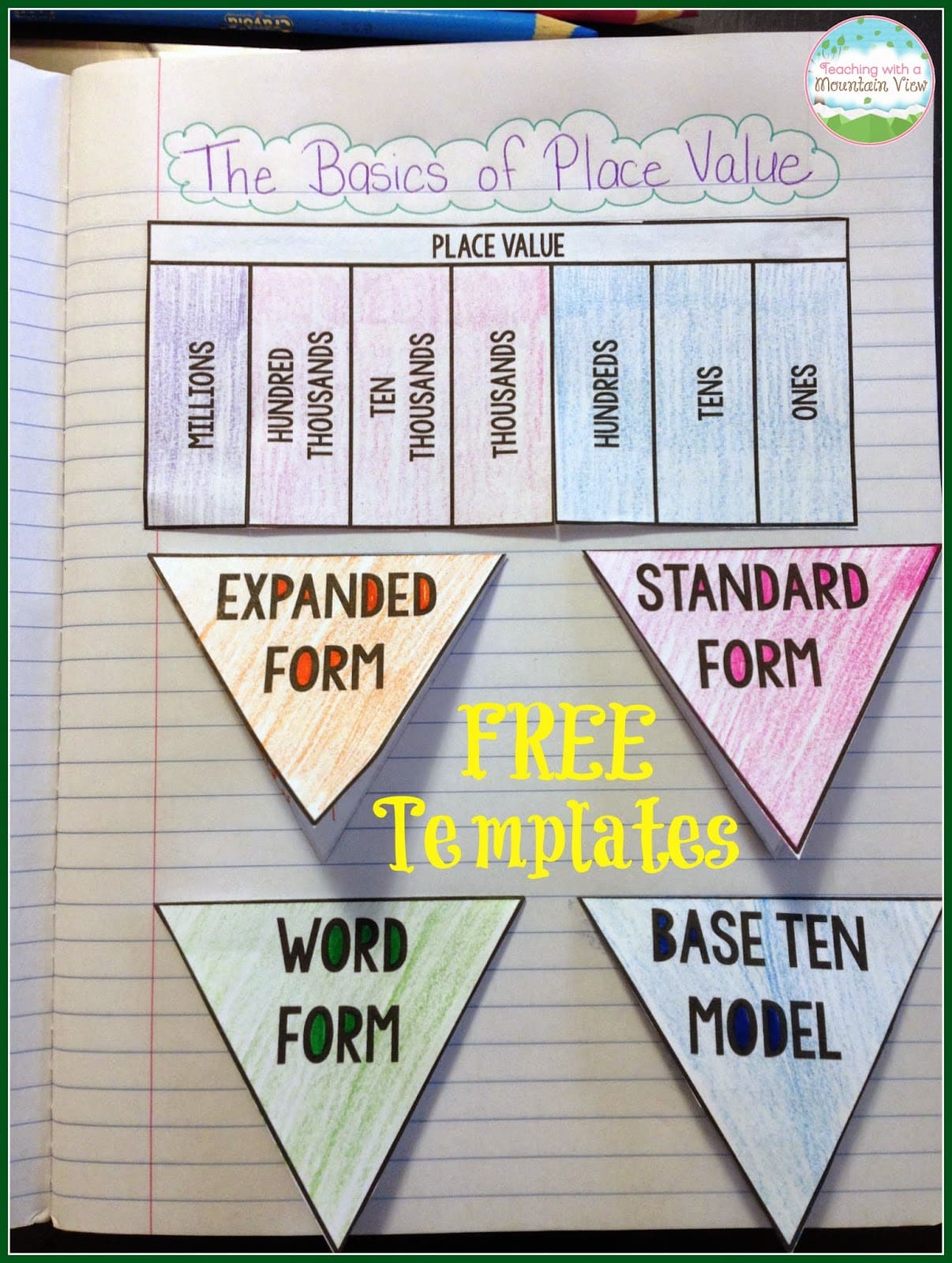
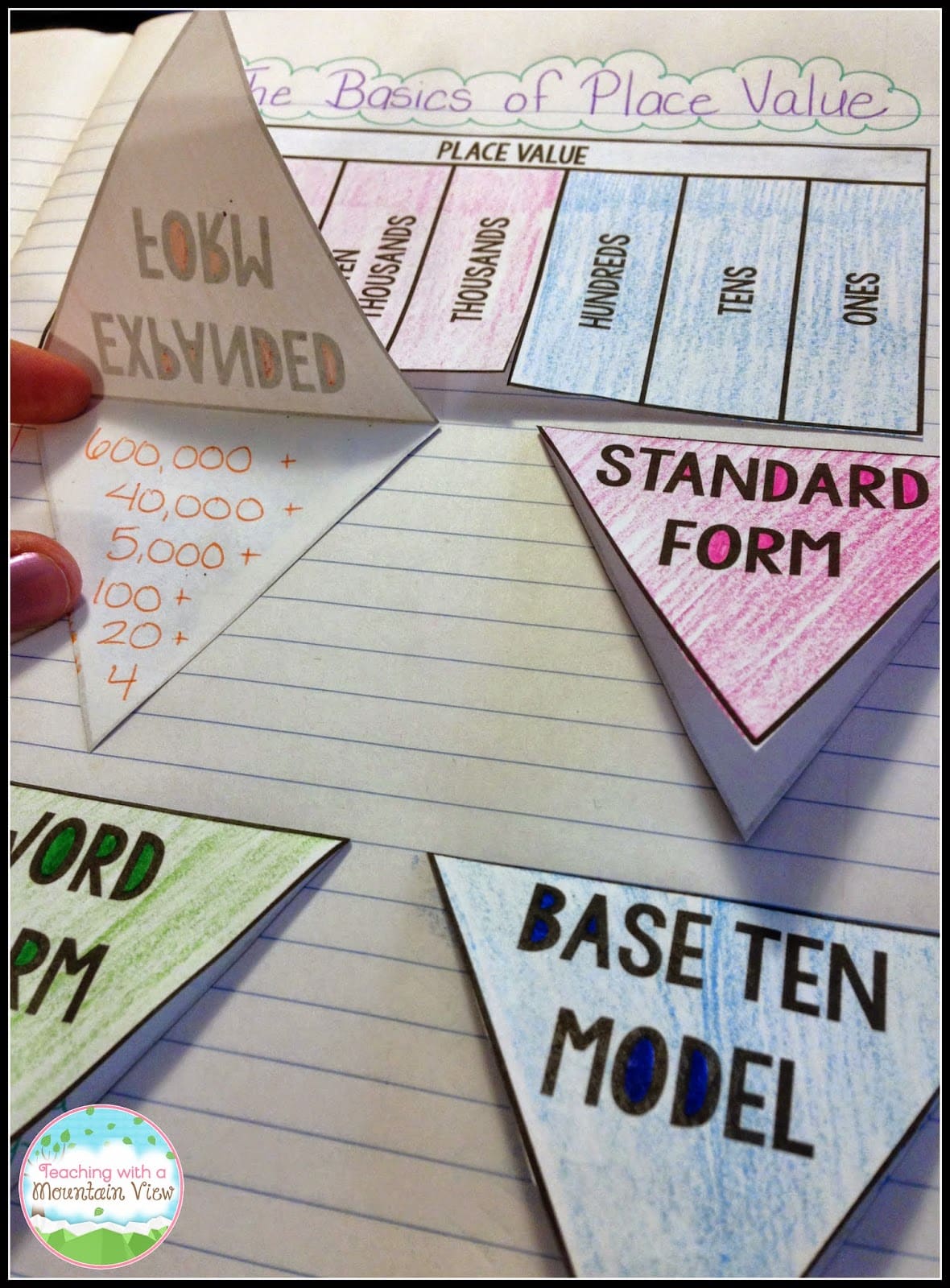
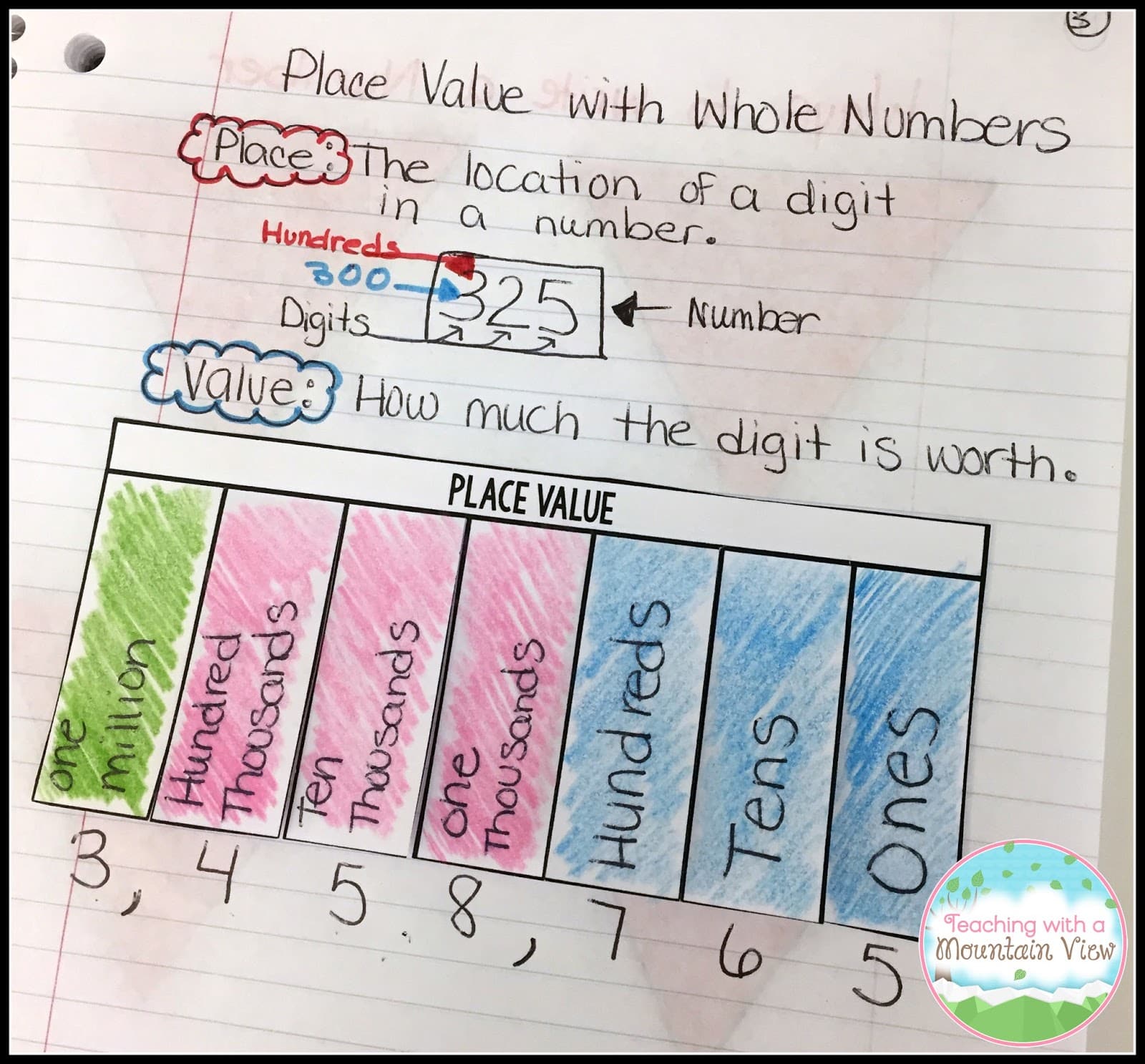
Update: Here is my most recent version of the place value anchor chart and focus board! It also includes questions that I’ve asked my students in relation to place value as well as several of my place value task cards for students to work through. You can get the templates for the anchor chart free HERE, but please make sure you only use this as a template only and fill in the content actively with you students.
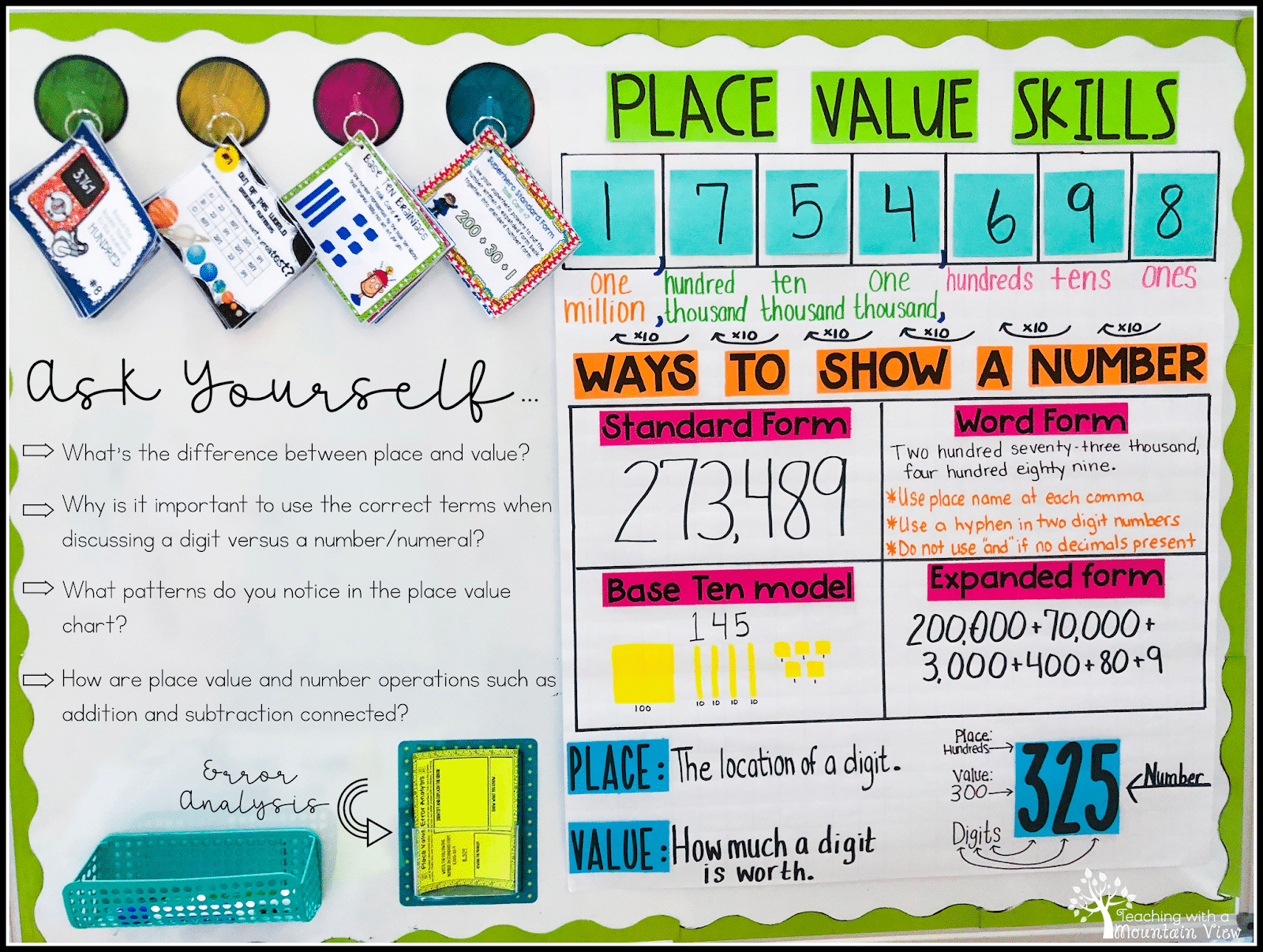
Place Value Activities
Difference between PLACE and VALUE: I also created a free activity called The Place Value Park that kids LOVE, and it is purely intended to review the difference between place and value. They draw a picture based on several tasks that relate to place and value. Because everyone uses numbers that are individual to themselves, their pictures all come out unique. This is a beloved activity every single year!
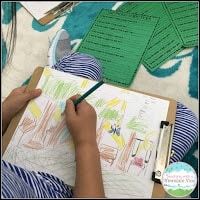
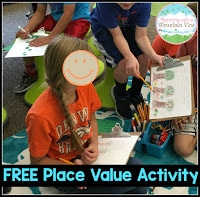
Place Value Discs: This hands-on activity really encourages your students to think critically about place value, the difference between value and quantity, and the different ways to write a number. First, you will need a set of disks. I purchased these disks on Amazon (click HERE for an affiliate link if you’d like to purchase them), but I also included some printable “disks” at the end of the file if you don’t want to purchase them! I took out the 1,000,000 disks since I was working with 3rd graders, but you can always leave them in to meet the needs of your students.
Exit Tickets: After we have done our first few lessons, I do a little bit of a place value exit ticket type check. This is the left hand side “output” assignment for their notebooks. Kids love it, and it’s an easy way for me to see if they grasped the concept I just taught them. For the Base Ten Model of this large number, I explain it to them, BUT I don’t make them draw it out. Instead, I have them split their 6-digit number into two smaller 3-digit numbers and represent it that way. You can grab the three pages I used in the notebook for free HERE!
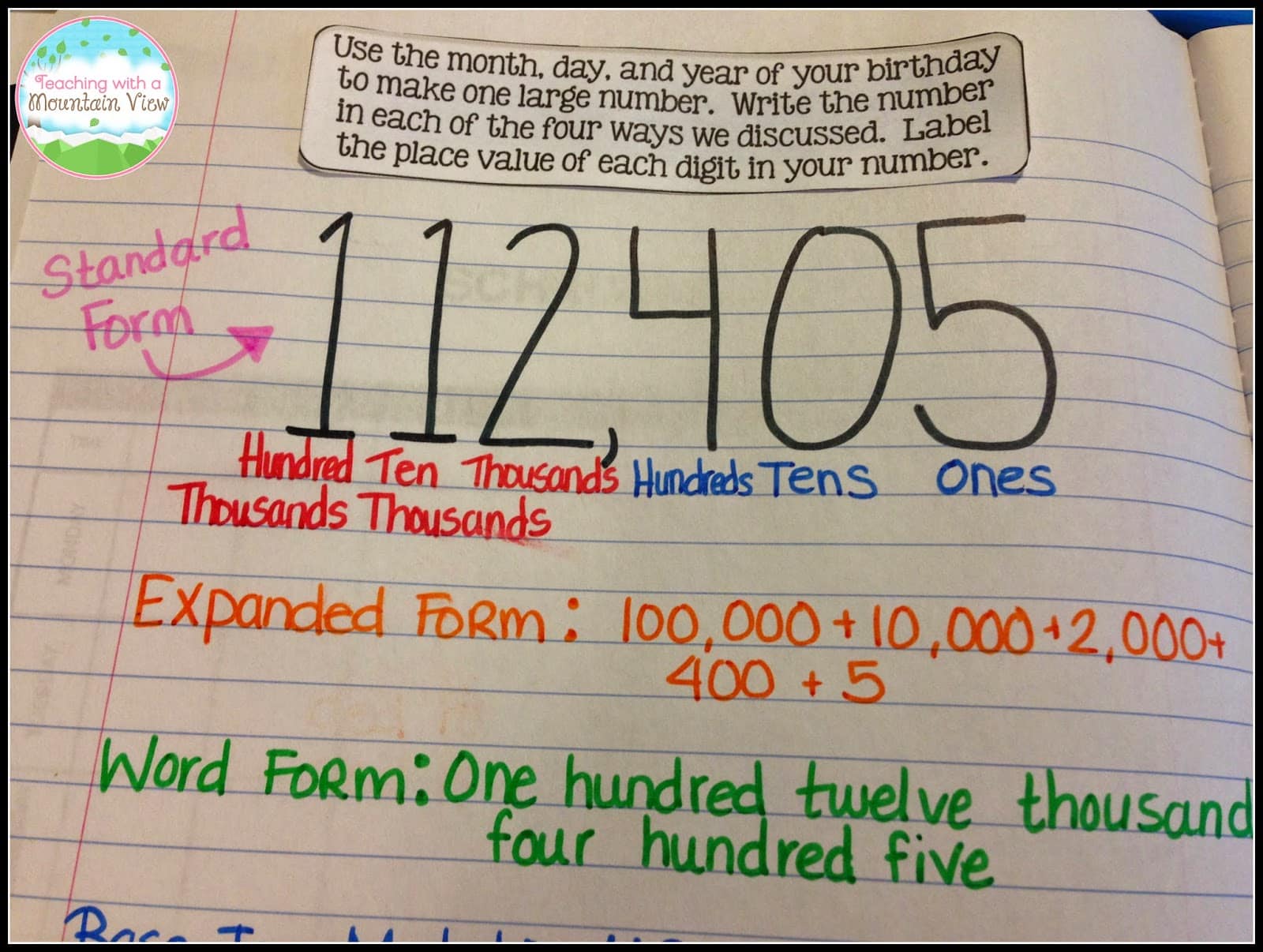
Pattern Block Pictures: We also use pattern blocks to practice. Students create a picture and then solve place value tasks related to their art. You can download this FREE sheet here.
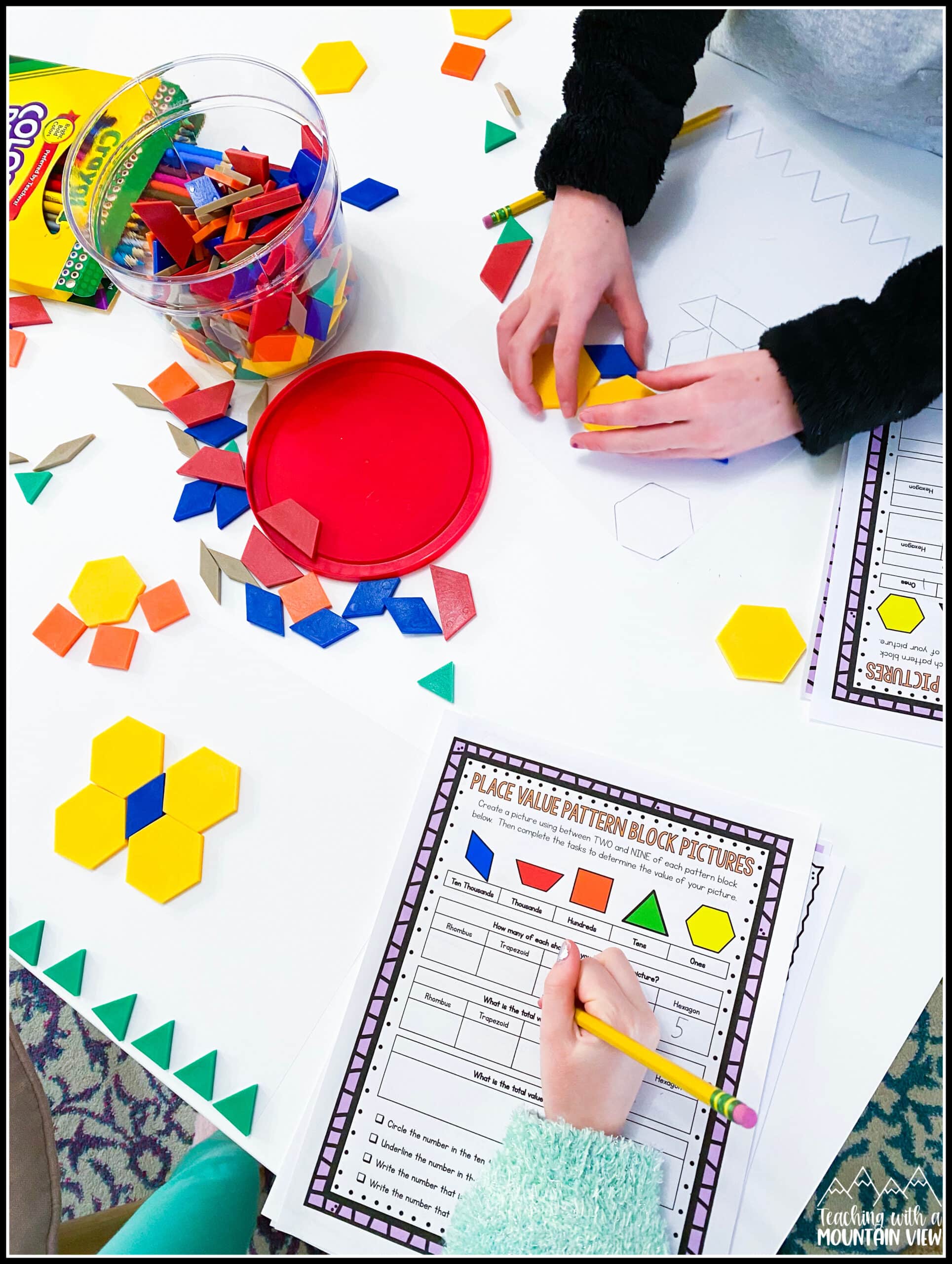
Cooperative Activity: Next, we move on to one of my favorite group place value activities called Candy Rush! I created this back when I was student teaching and have used it every year since. My kids just LOVE it. Basically, each student gets a bag of candy (I used to give them actual candy, but now I just use the included printable bags of candy) and finds the value of their bag of candy.
Then, they get into groups and compile their information into a chart and answer questions about all of their candy values. It really helps students understand the difference between PLACE and VALUE because they see that even though one student has 29 pieces of candy, they may have the lowest value because of the types of candy they had. They all have those lightbulb moments during this activity that I just LOVE!
I really tried to make the questions reflective so that they could draw connections. Of course, there is plenty of other math practice included, too! You can grab the activity HERE.
You can grab a variety of these place value activities and more in this bundle!
Place Value Task Cards
As always, task cards play a big role in our math practice. I use this bundle of task cards throughout out unit to practice a variety of place value skills. If you print the task cards with four to a page, they make great practice booklets!
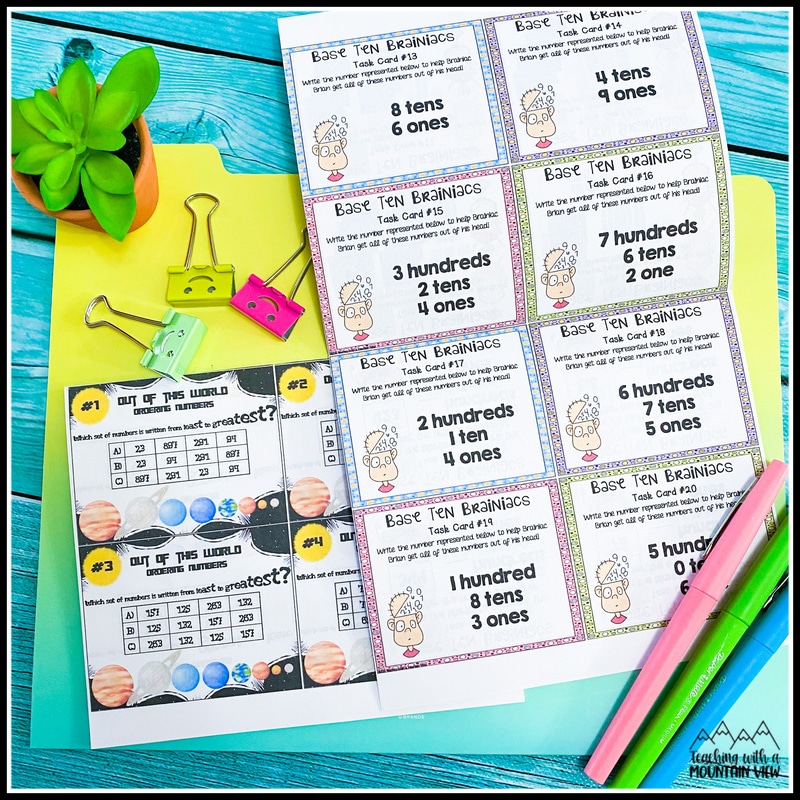
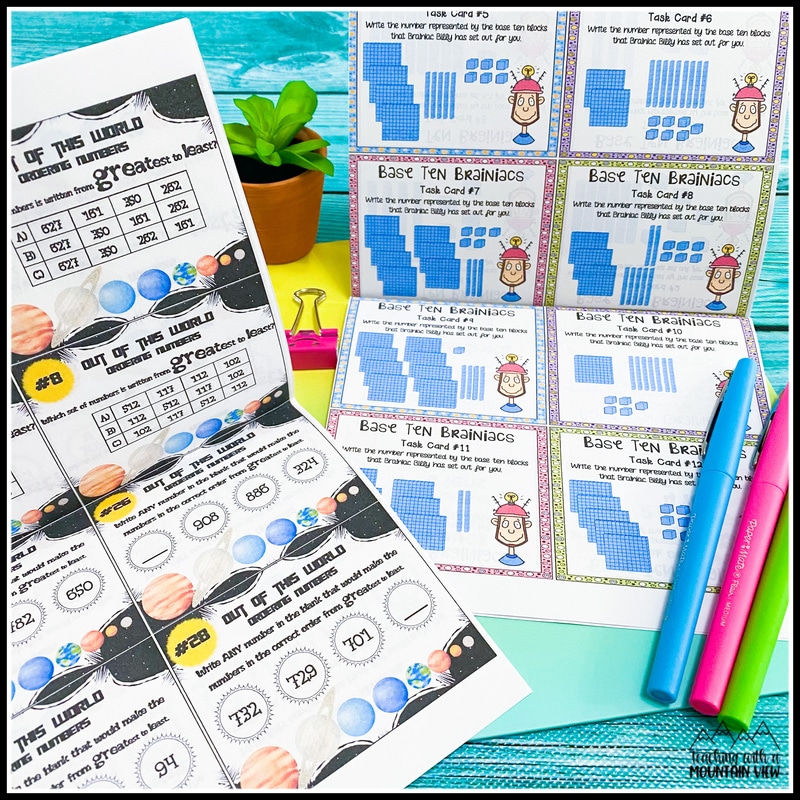
Place Value Math Project
When I feel like they are fairly solid in their understanding of these skills after the group activity, we get busy with my very favorite Math Project of the year, Place Value Detectives. I still remember the exact moment I came up with this project, and it was like a lightbulb turned on. It has been a huge hit with students, and I love the way it makes them really think critically about place value.
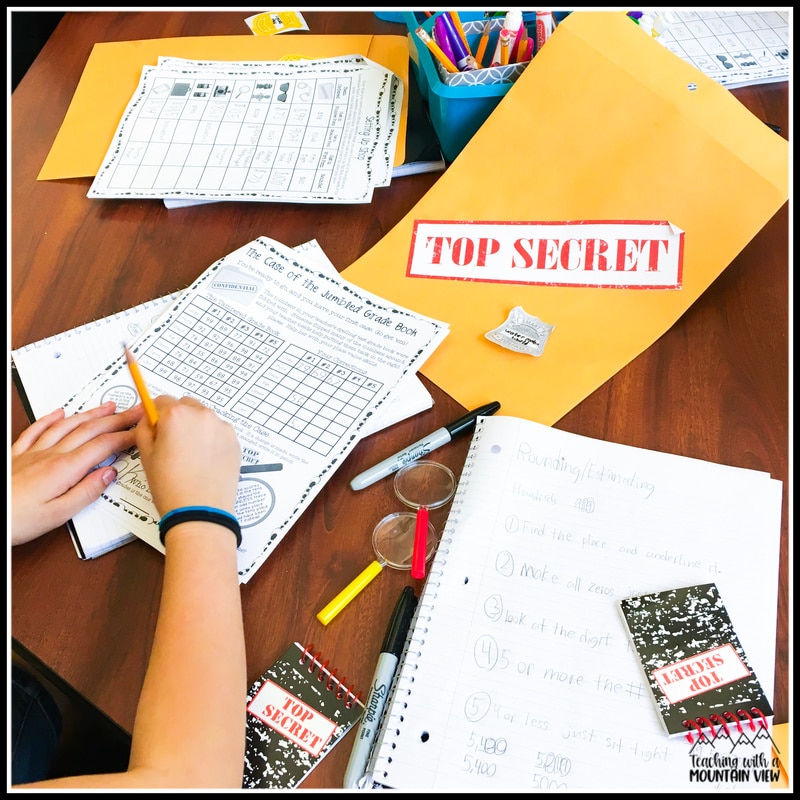
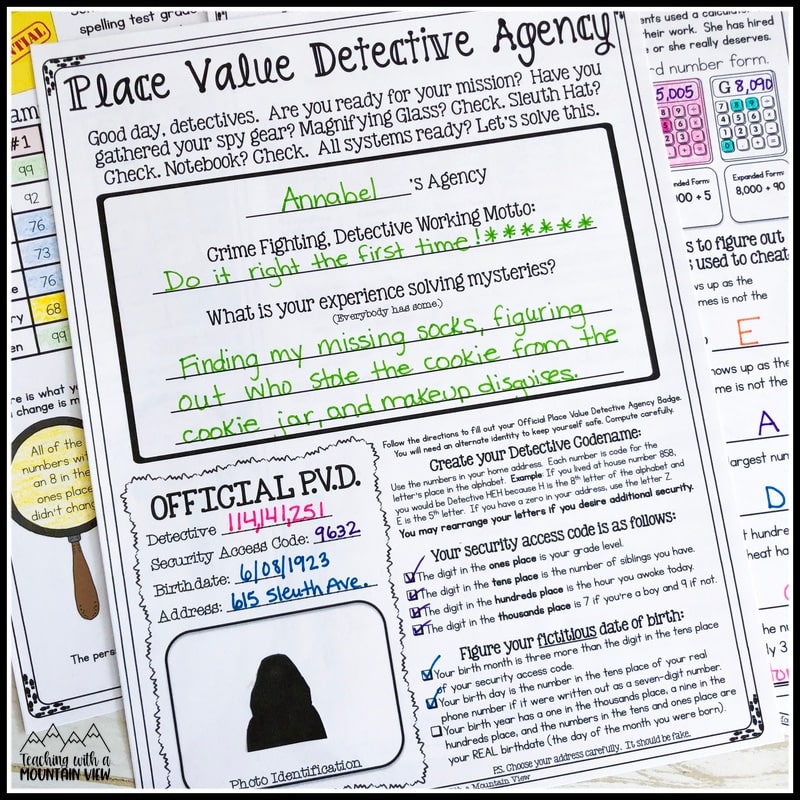
I have differentiated the project so that it meets the needs of students in grades 2-5, although it’s best suited for grades 3+ since there is a lot of critical thinking and problem solving involved. It covers all the standards, including expanded form, word form, rounding, comparing, and more! There’s a sheet where students can keep track of completed activities.
This is one of my favorite pages. It has students figuring out how grades were changed in a jumbled grade book to solve the mystery of the School Supply Stealer using their clues.
Here is one of the challenge/enrichment differentiated place value pages! The kids LOVE figuring out the ages of the family and deciding who is tampering with the trash cans.
Place Value Extensions
I was working with a group of second graders who were well above grade level. They really needed something that would challenge their thinking and also be a quick review of base ten place value models, so I created these Mystery Number Place Value Challenges. They were GLUED to them, and it was so much fun watching them work with the manipulatives to solve the problems.
Although I’m not one for “tricks” and I always teach my kids how to use a number line to round numbers, I always LOVE to show them this fun balloon rounding reminder. When you hold the balloon and let go of 1, 2, 3, or even 4 fingers, the balloon stays right where it is. if you let go of 5 fingers, though, what happens? THE BALLOON GOES UP! Just like in rounding. They LOVE, LOVE, LOVE this analogy and our silly little saying that goes with it. Again, we definitely still teach them with a number line so that they understand conceptually what they are doing, but this is a great rounding trick for those visual kids.
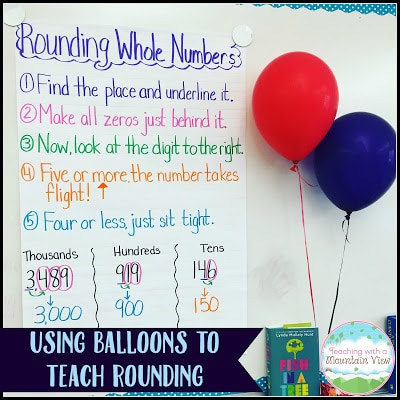
Free Place Value Assessment
After we work through the place value project and the candy rush activity, I feel like my students have a good understanding of place value skills. We culminate the unit with a review and/or quiz, which is FREE on my TpT store. I do not give all of the pages to all of the kids, especially at one time. I use it as homework throughout the unit or give one or two pages to each student to complete as a quiz at the end, depending on their skill level. You can download this FREE Place Value packet at my TpT store!
More Place Value Activity Ideas
I also asked some of my Facebook fans what their favorite place value activities are. If you are looking for an amazingly supportive group of fellow teachers, please consider joining us over at Inspired in Upper Elementary, a teaching Facebook group! Here are some of their excellent ideas for teaching place value!
- “I enjoy giving my kids opportunities to move! I give them a number that is identified as ones, tens, or hundreds. I say a number out loud and together, without talking, they have to move around the room to find their partners that will make that number” -Michelle Q.
- “Roll dice to make a 2 or 3 digit number. Then show that number in 4 different ways: expanded form, word form, number form and with base tens.”- Beth G.
- “I have the students get in groups and look at the 2010 population census and pick 5 countries and record their population, from there they make a place value chart and write the numbers in expanded, standard, and word form and order them from least to greatest. From there, we use a classroom number line and place the countries and their populations on it. After that we review the number line and apply our data analysis by seeing what number was most frequent, less frequent, etc…helps with real world application.”- Morgan C.
- “Used base ten blocks today to teach writing numbers in expanded form. It was awesome to see their faces light when the finally made the connection that (2 x 100) = 200 because it’s two groups of 100 units! Best lesson so far this year”-Christi W.
- “I like to have the kids make place value pictures. They use hundreds, tens, and ones to make a picture then they have to show their number.”-Claudia C.
- “We integrate social studies by having the students use an atlas to locate various countries in the world and identify the population and land area. We compare and order the numbers as well as write them in word form and expanded form. We will also have the students brainstorm as to why certain countries have a higher population than others and if there is a correlation between land area and population.”-Angie L.
- “Place value Bingo. Students have a certain # of places to write a number. They write a number. Then call out digits & place value positions until they call bingo. Students also have to read the number out loud as well as go over digits/ place values called.”-Margaret K.
- “As we progress through our work w/ place value, students will partner up & play “war” trying to create the largest, smallest, put them in a certain order the fastest, etc.”-Staci T.
- “Number top it. Place value game with playing cards…players must build the largest number they can by picking cards. To win the just have the largest number and read it properly 2 different ways!”- Kerry O.
- “We also do the secret number game. I also like to give the kids cards with digits, say the number and then they have to get themselves in the right order.”-Jenneth S.
- “I love to post various 4-6 digit numbers around the room and play “I spy”-Samantha K.
- “My students love “The Secret Number Game.” It is played like this:
–Place lines on the board or have your students put them on their whiteboards. Then give the clues. (You can also make these on paper. Kids even love to write them, teacher can type them, and they can be given to the whole class.)
____ ____ , ____ ____ ____
The digit in the thousands place is the number of tentacles on an octopus.
The digit in the ones place is the number of legs on a cat.
The digit in the hundreds place is the number of arms on a starfish.
The digit in the thousands place is the sum of 6 + 2.
The digit in the tens place is the difference of 18-9.
What is my secret number?
Say it!! “-Stacy P. - “ I do an outdoor PE game. Two teams of students, red rover style. Each student on the line gets a digit 0-9 (some students have partners). I call out a large number (i.e. 68,709) and students with those digits have to run to the other side and line up in the correct order. First team to correctly display the number called wins a point! They love it!! “-Ashly R.
- “ I play a game with my students in which I tell them how many digits and they set up their spaces. Then I tell them, “There is a 4 in the thousands place, a 6 in the hundred thousands place, etc.” (out of order) until we have built the number. If theirs matches mine, they get a point. Depending on the level of the students, I will make it more challenging by not repeating a clue or going faster, or make it easier by repeating clues or using fewer digits.”- Laura H.
- “I also have them line up in order from ones to millions while holding cards. The other students are able to see quickly whether the students are in the correct order and we use cards with commas as well to help reinforce the periods.”-Tracy Y.
- “Place value people: Give a group of students one digit each and have them stand at the front of the class. Insert “people commas” as needed, depending on the size of the number. Identify one person in the group; the rest of the class must write the place and place value of the digit. Use your favorite method for choosing a student to tell the answers. If the student is correct, he/she gets to replace that person and be a new digit in the number. “-Donna G.
Happy teaching! Feel free to share your best place value idea or blog post in the comments!
Mary Montero
I’m so glad you are here. I’m a current gifted and talented teacher in a small town in Colorado, and I’ve been in education since 2009. My passion (other than my family and cookies) is for making teachers’ lives easier and classrooms more engaging.







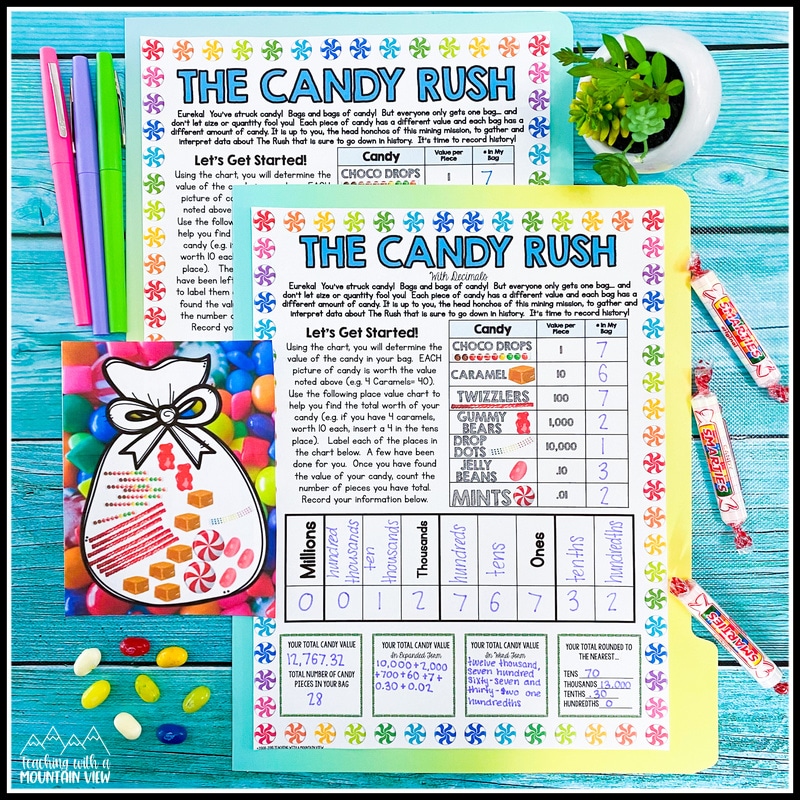
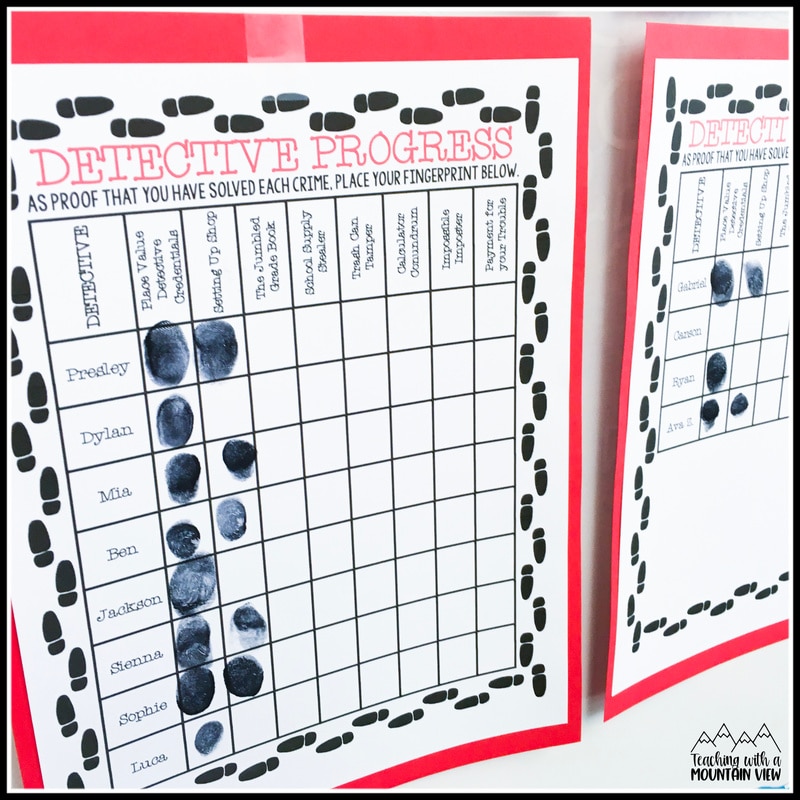
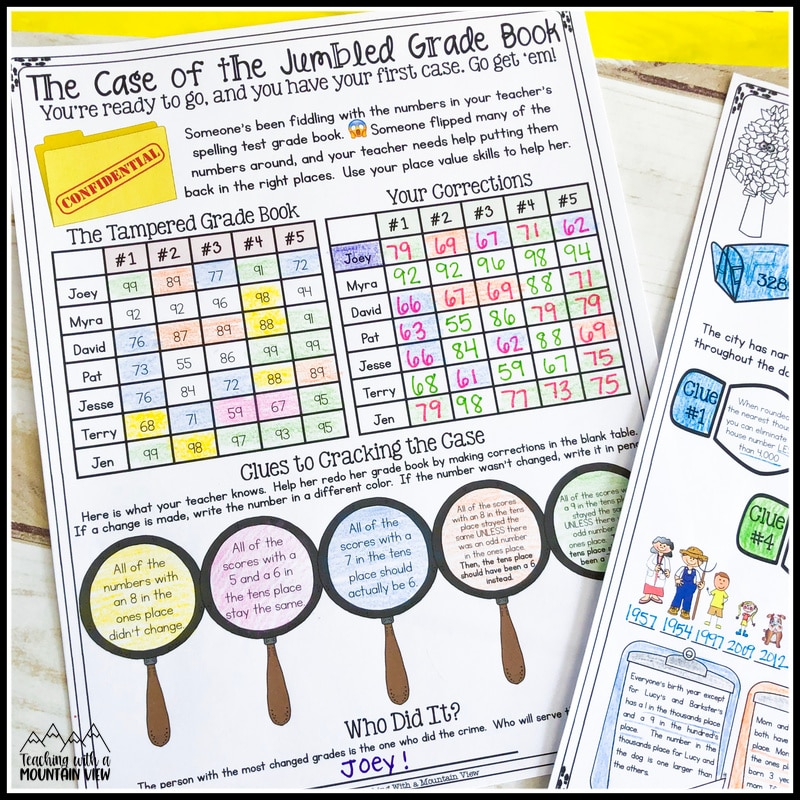
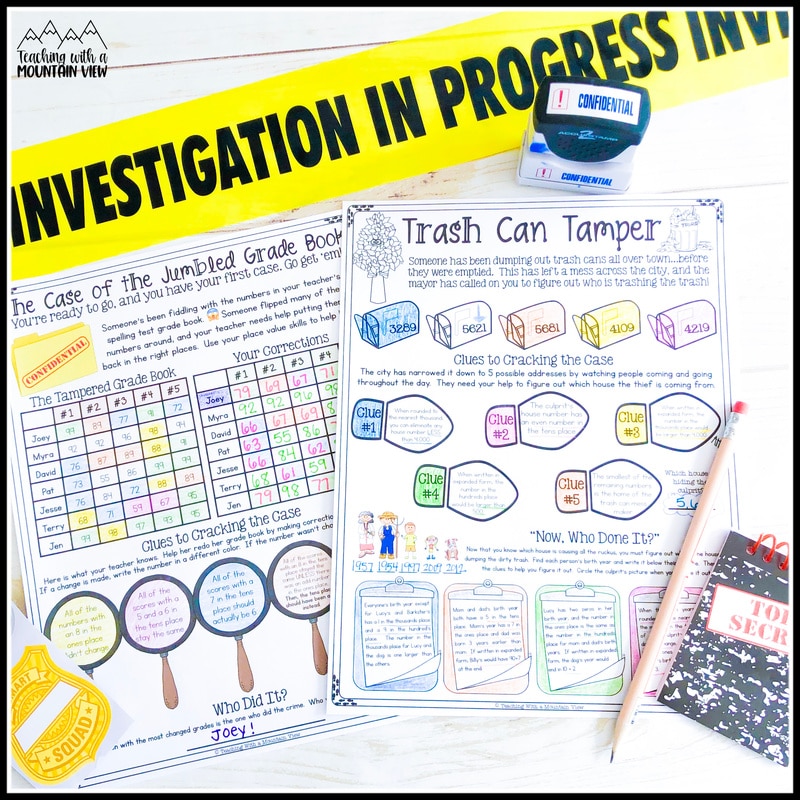
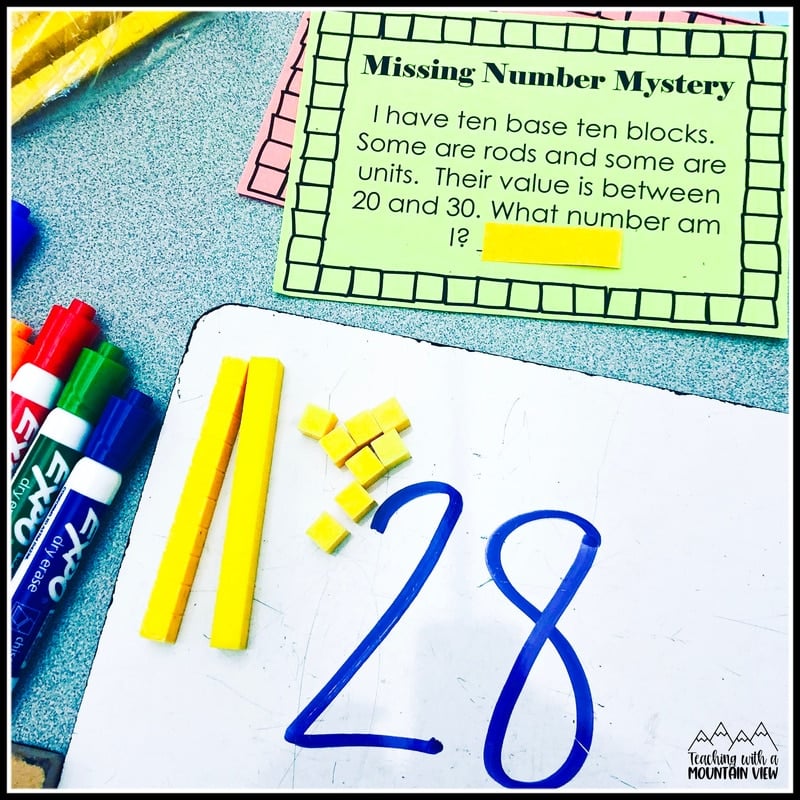
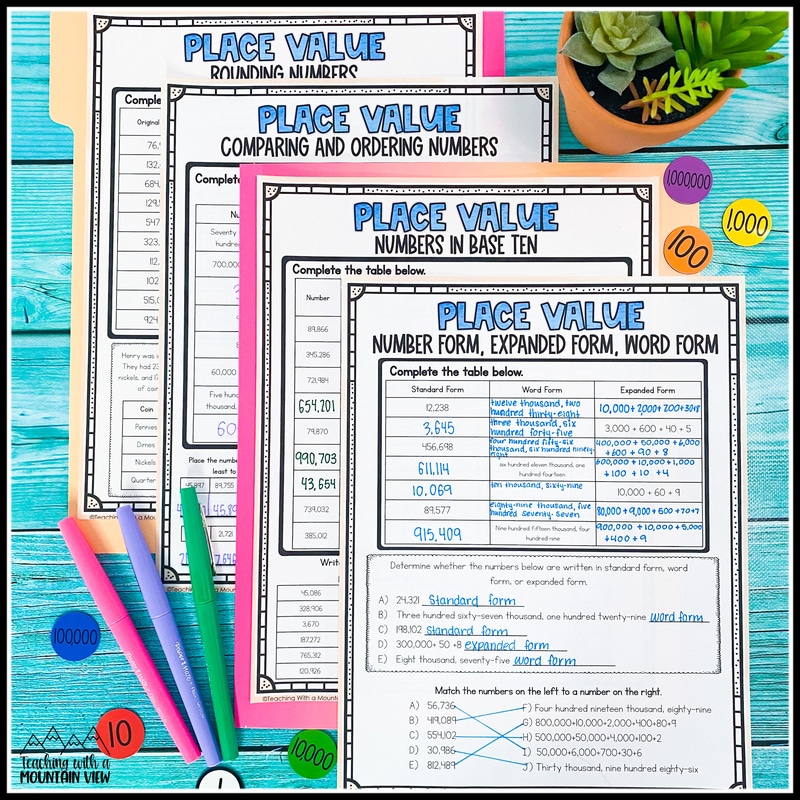





This was an awesome post! I teach 3rd grade and the first topic I teach in math is place value also! Thanks for so many great ideas and resources!
These ideas are wonderful! I teach 5th grade and we start with place value as well. I am always needing new ideas and activities that allow the students to move about the classroom. Thank you!
Wonderful ideas!! Thanks for sharing! We start place value tomorrow!
Rachel
A Tall Drink of Water
These are such great ideas! Just what I was looking for! Thank you! 🙂
Great pages! I tried getting the free place value pages to print, but they wouldn't. 🙁
The journal freebies are great! Very student friendly. Thanks for your post and all the great ideas!
I'm looking forward to incorporating this anchor chart and set of foldables into our first week activities. Thanks!
This might be a bit bold, but what other lessons do you use in your notebook? I love your ideas and would love to use them too!!
it is not viewed as an extravagance to take your kid for best writing service on google advanced education like it has been some time recently. Doubtlessly the 21st century employments oblige.
I love the anchor chart. I totally just adapted this for my first graders. We are teaching expanded form and the curriculum doesn't really explain to them enough about the basics of place value and the kiddos are struggling with it. I plan on using this chart with them for our reteach day!
This comment has been removed by a blog administrator.
gucci bags
louis vuitton handbags
gucci outlet online
oakley outlet
polo ralph lauren
louis vuitton
jordan retro 8
coach outlet
kate spade outlet
michael kors outlet
jordan retro 3
ray ban wayfarer
coach outlet stores online
mont blanc legend
cheap jerseys
gucci outlet online
hollister kids
coach factory outlet
louis vuitton outlet
abercrombie store
michael kors outlet
ray ban glasses
michael kors purse
ray ban outlet store
michael kors outlet
fitflop
christian louboutin outlet
soccer jerseys
louis vuitton outlet
coach outlet store online
jordan 13s
coach outlet
coach outlet online
coach outlet
retro jordan
prada sunglasses
20150626xiong
This article is so informative.The above proposed tips in regards to online employment inquiry are extremely beneficial.There are such a variety of write my paper for cheap where anyone can search and post occupation down free.
Posts shared useful information and meaningful life, I'm glad to be reading this article and hope to soon learn the next article. thank you
http://cekkesehatan.blog.fc2.com
http://bacakesehatan.drupalgardens.com
So many grwat ideas. Thanks! I git the olace vakue detective s and look forward to using it in just a few weeks.
So many grwat ideas. Thanks! I git the olace vakue detective s and look forward to using it in just a few weeks.
I love this…thank you!! These are going to be the first things in our Math notebooks. Question…does anything go until the place value chart or is it there for reference only? Thanks again for sharing.
Hi Malena,
So glad you found some idea! Yes, under the place value chart, we write wide variety of numbers in each of the value and read them as a class together.
🙂 Mary